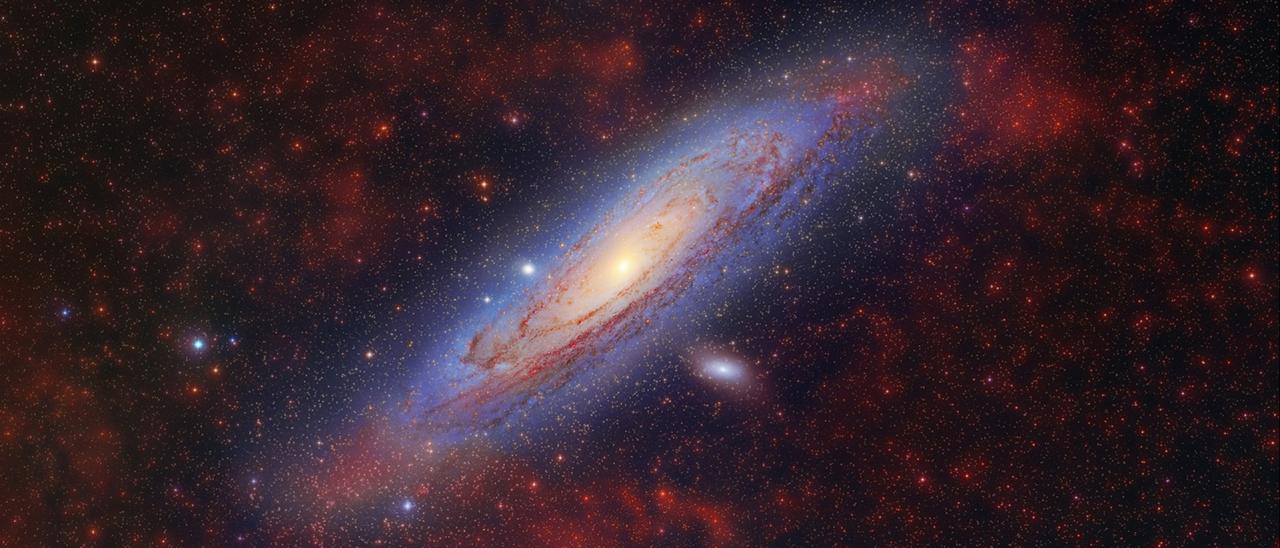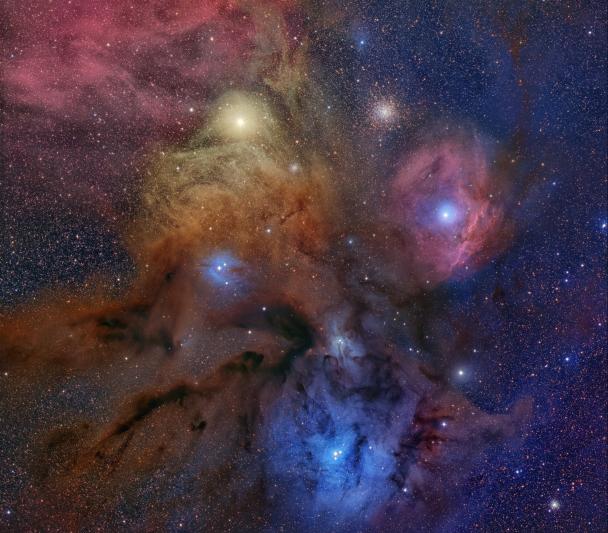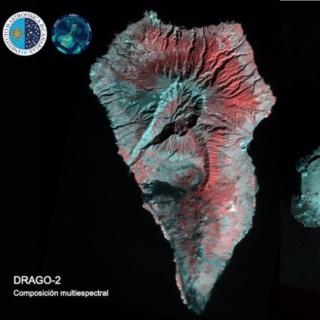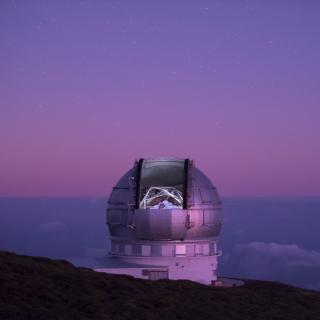Andromeda is the closest giant spiral galaxy to Earth. In fact, it can be located with the naked eye in skies without light pollution. That's why it's often portrayed by astro photographers. In this case it has been Daniel López, collaborator of the IAC, the author of this picture chosen today, January 8, as Astronomy Picture of the Day by NASA.
Our neighboring galaxy has a diameter of about 220,000 light years in which almost one billion stars meet 2.5 million light years away. This assumes that the photons recorded in this image departed from it when the hominids were still evolving in South Africa. However, they take less and less time to reach us as the Andromeda galaxy approaches the Milky Way at a speed of 300 km/s.
The image also shows reddish clouds that appear to be around the Andromeda galaxy. However, formed of ionized hydrogen in a gaseous state, these clouds occupy a foreground in the photograph and, in fact, are located in the Milky Way. It would be the same as when we see the Moon through the clouds.
To the naked eye, it may seem quite small since only the central part of the galaxy is bright enough to be appreciated by the human eye, but its actual diameter would be equivalent to seven full moons seen from the Earth. This ratio is best understood knowing that the image chosen as today's APOD is one of those that will be part of the "100 Moons²" exhibition, in which portions of the sky have been captured with an area of 10 full moons high by 10 full moons wide. This exhibition is part of the project "NIEPCE: from negative to positive", a tribute from Astronomy to Photography.




